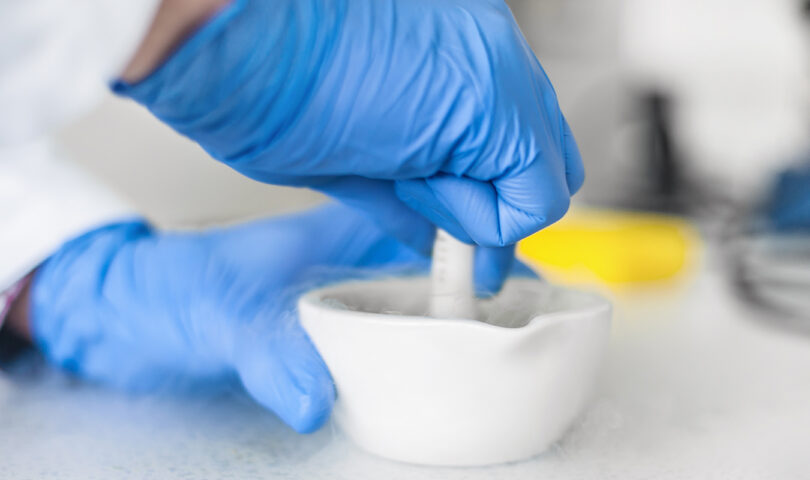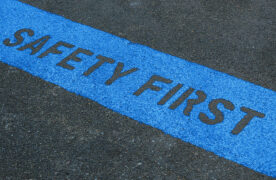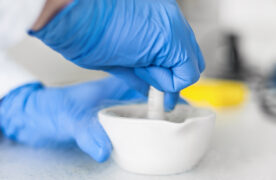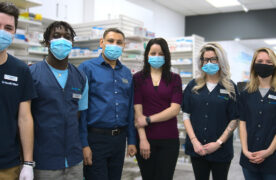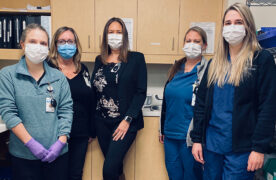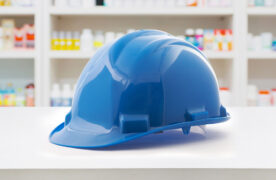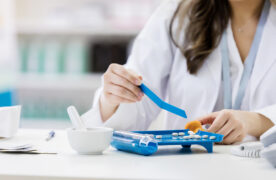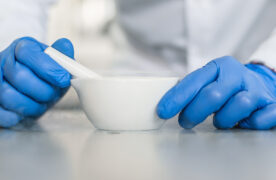The College addresses some common questions about implementation of the NAPRA Model Standards for Pharmacy Compounding of Non-Sterile Preparations regarding personnel training and facility requirements. As a reminder, Phase 2 requirements related to personnel training and quality assurance must be met by July 1, 2021. See the Checklist Overview for Phases 1, 2 and 3 on the OCP website.
Phase 2 of the NAPRA Non-Sterile Compounding Standards implementation involves personnel training and skills assessment. What courses does the College recommend? What if we cannot get all the compounding staff trained by July 1, 2021?
Refer to Section 5.2, Table 1, Table 2, Checklist 1 and Table 8.4 of the NAPRA Guidance Document for Pharmacy Compounding of Non-sterile Preparations.
In Phase 1, the knowledge and skills of non-sterile compounding personnel should have been assessed for gaps to identify training needs and help plan for the work needed in Phase 2 and, ultimately, to fully achieve the standards by January 1, 2022. Depending on the extent of these gaps, it may be appropriate to put into place an intermediary risk mitigation strategy that addresses safety, while providing continuity of care for patients.
There is no requirement in the NAPRA Model Standards for Pharmacy Compounding of Non-sterile Preparations for personnel to complete a formal, accredited or third-party training program. The pharmacy manager/department head (or designated non-sterile compounding supervisor) may choose to develop their own training tools and program to suit their specific needs. The intended outcome is that the expertise of personnel responsible for compounding must be commensurate with their assigned duties. The potential need for training is not limited to the compounding processes or technique; personnel must also be educated on policies and procedures, such as those related to attire, personal protective equipment, cleaning, and conduct, which must also be developed during Phase 2.
Refer to Table 8.4 of the Guidance Document for an overview of training topics for each Level (A, B or C), as well as the specific sections relevant to the type of personnel or preparation. Fillable and printable forms for Phase 2 activities can be found on the NAPRA website:
-
- Checklist 1: Skills assessment checklist for compounding process
- Table 1: Elements to cover in training of compounding personnel
- Table 2: Elements to cover in training of cleaning personnel
- Table 3: Examples of policies and procedures
For registrants interested in exploring external courses, OCP provides a listing of CE resources however the listings are not exhaustive, and inclusion of a course is not to be construed as an endorsement.
We are planning to renovate our pharmacy space to meet Level B requirements. Do we need to move the sink so it is inside the compounding room?
Refer to Sections 5.4.1.4, 9.1.1 and 9.2.1 of the NAPRA Guidance Document for Pharmacy Compounding of Non-sterile Preparations.
It is a standard of accreditation for all pharmacies to have two sinks or one double sink in the dispensary. These standards must be maintained at all times. Accredited pharmacies engaged in non-sterile compounding must also implement the Model Standards for Pharmacy Compounding of Non-Sterile Preparations and the sink requirements outlined in the accompanying guidance document (GD).
A Level B compounding room requires a sink within the room that meets the requirements of Section 5.4.1.4. If there is a C-PEC in the room for compounding hazardous drugs, Section 9.1.1, consideration should also be given to the placement of water sources and drains so that the operation of the C-PEC is not compromised. These are summarized in the Table below.
Any material changes to the existing accredited area require a Notice of Renovation to be submitted to the College, and an Operations Advisor will be assigned to review the floor plan.
| LEVEL | Sink Location | GD Section | Comments |
|---|---|---|---|
| A |
|
5.4.1.4 |
|
| B |
|
5.4.1.4 |
|
| C |
|
5.4.1.4 9.11 |
|
| All levels |
|
5.4.1.4 |
|
How do I determine whether external ventilation is needed for non-sterile compounding?
Refer to Sections 5.4.1.3, 8.2, 8.3, 9.1, 9.1.1, 9.1.2, 9.1.3 and 9.1.5 of the NAPRA Guidance Document for Pharmacy Compounding of Non-sterile Preparations.
Ventilation (the V in HVAC) is an engineering control intended to remove or control contaminants released in indoor work environments by bringing in fresh air. Fans, while they circulate the air, are not suitable for ventilation as they would blow the contaminant around the work area without effectively controlling it. Opening a window or door might allow outdoor air in, however it is not controllable and risks bringing in other contaminants and disrupting the compounding environment.
The Canadian Centre for Occupational Health and Safety (CCOHS) Fact Sheet on Industrial Ventilation may be helpful for background information on this subject. Compounding personnel should know how the secondary ventilation (HVAC) system operates.
The external ventilation requirements differ between Levels A, B and C (see table below).
| LEVEL | External Ventilation | GD section |
|---|---|---|
| A |
|
|
| B |
|
|
| C |
|
|
| All levels |
|
|
For storage of other hazardous products (e.g., non-antineoplastics, products that carry a reproductive risk, and final dosage forms) external ventilation is recommended but this may not always be possible.
Do we need two separate designated compounding areas for hazardous and non-hazardous non-sterile preparations?
Refer to Sections 9.1, 9.1.1, 9.2.1, 9.2.2 and 9.3 of the NAPRA Guidance Document for Pharmacy Compounding of Non-sterile Preparations.
It is preferable to have separate areas for compounding hazardous and non-hazardous non-sterile preparations, however, if this is impossible and the same area is used, compounding and/or cleaning personnel must, at minimum, be assured that the area and any reusable equipment has been meticulously deactivated, decontaminated and cleaned to prevent any risk of cross-contamination from the hazardous materials before other preparations are compounded.
Because of the difficulty of removing hazardous product contamination, the surfaces of ceilings, walls, floors, fixtures, shelving, counters and cabinets in the non-sterile compounding area should be smooth, impermeable, free from cracks and crevices, and made of non-shedding material. It is strongly recommended that equipment be dedicated for compounding each of hazardous and non-hazardous drugs. Alternatively, disposable equipment should be used, if possible, to reduce the chances of cross-contamination.
The Designated Manager/department head and/or non-sterile compounding supervisor must have policies and procedure in place for the deactivation, decontamination and cleaning required after compounding hazardous non-sterile preparations. As part of the pharmacy’s quality assurance program, personnel must be trained and their work routinely assessed to ensure compliance with procedures.
For more information and resources related to non-sterile compounding, including checklists, assessment tools, articles and FAQs, please visit the Non-Sterile Compounding webpage.

